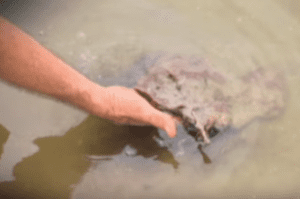
‘Static Kill’ Operation To End BP Oil Spill. BP says a “static kill” operation to shut down its gushing Gulf of Mexico oil well is working. According to MSNBC, BP says the well is now in a “static condition”, meaning the flow of oil is being held back. The company is touting the development as […]

‘Static Kill’ Operation To End BP Oil Spill. BP says a “static kill” operation to shut down its gushing Gulf of Mexico oil well is working. According to MSNBC, BP says the well is now in a “static condition”, meaning the flow of oil is being held back.
The company is touting the development as a major milestone in the Gulf of Mexico oil spill, which has been going on for more than 100 days. A containment cap placed on the well in July has been keeping the oil bottled up inside over the past three weeks, but is considered only a temporary measure. According to government estimates, 4.9 million barrels of crude escaped from the well between the April 20 explosion aboard the Deepwater Horizon oil rig and the placing of that cap.
The static kill involved pumping mud down through the well’s blowout preventer in order to push the oil back to its source rock. According to MSNBC, workers stopped pumping mud in about eight hours into the static kill, and are now monitoring the well to make sure it stays stable. Next, BP must decide whether to cement the well.
BP has said the static kill alone might be enough to plug the well once and for all. However, engineers won’t know that for sure until a relief well intercepts it sometime next week and allows them to check the work. The relief well will then be used to execute a “bottom kill,” in which mud and cement will be injected into the bedrock 2½ miles below the ocean floor, MSNBC said. At that point, the well will be plugged from two directions, and should be permanently sealed.
Meanwhile, the White House is reporting that 75 percent of the oil released into the Gulf of Mexico by the stricken well is now gone. Making the rounds of morning talk shows today, the administration’s energy adviser Carol Browner said most of the oil had been captured, burned off, evaporated or broken down in the Gulf.
Despite the rosy picture being painted by BP and the government, scientists say the Gulf Coast still has a long way to go before it recovers from the disaster. “My prediction is that we will be dealing with the impacts of this spill for several decades to come and it will outlive me,” Dr. Ed Cake, a biological oceanographer, as well as a marine and oyster biologist, recently told Inter Press Service. “I won’t be here to see the recovery.”
Cake pointed out that 21 years after the Exxon Valdez spill in Alaska, effects are still being felt there. He also said 31 years after the Ixtoc-1 oil spill, oyster beds along Mexico’s Yucatan Peninsula have yet to recover. Both the Ixtoc-1 and Exxon Valdez spills were much smaller than the BP disaster.
The personal injury attorneys at Parker Waichman LLP offer free, no-obligation case evaluations. For more information, fill out our online contact form or call 1-800-YOURLAWYER (1-800-968- 7529).


